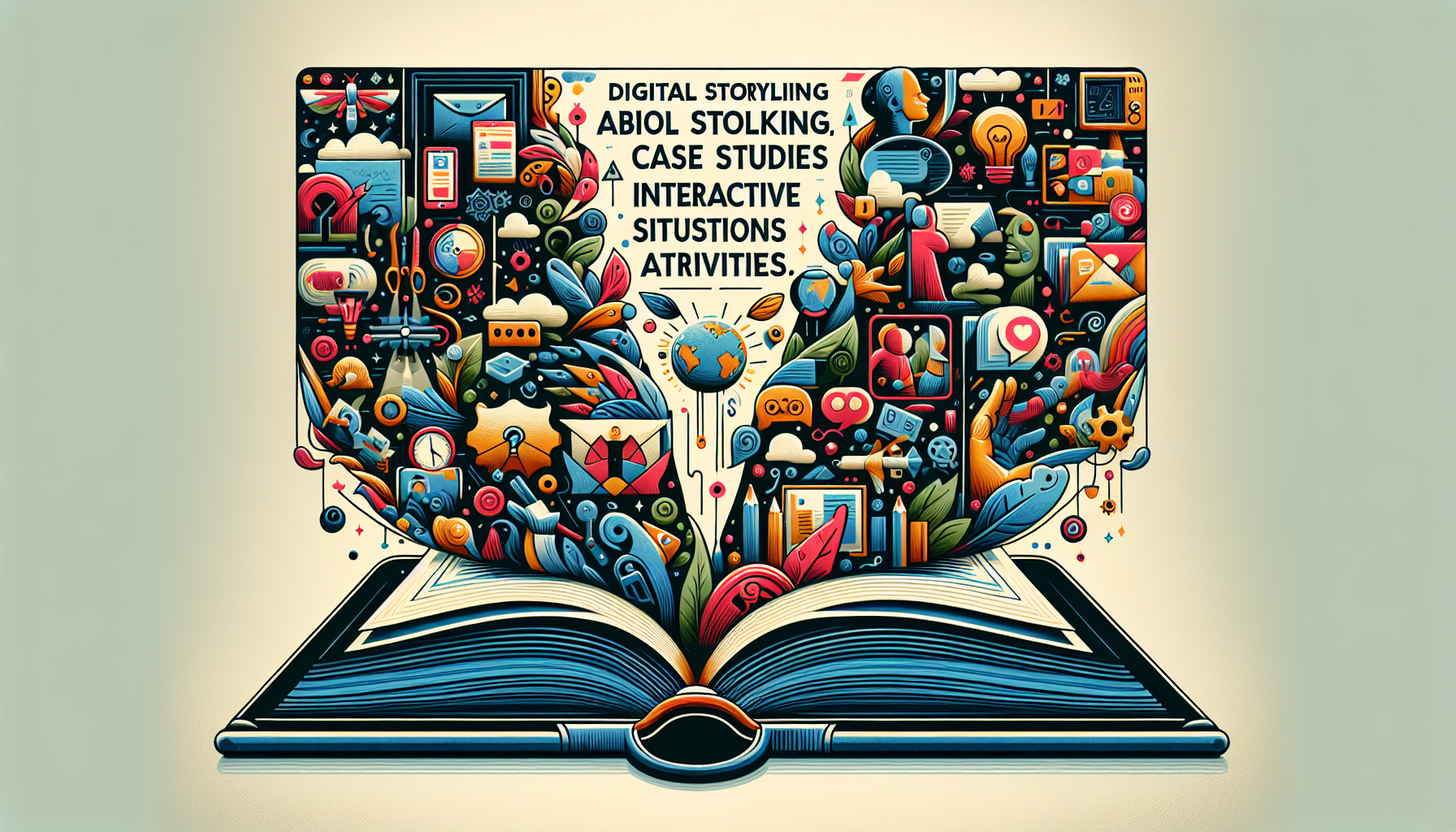We all know that learning can sometimes feel like a slog, right? It’s often dry and packed with information that makes our eyes glaze over. If you’ve ever wished there was a way to make eLearning more engaging, you’re definitely not alone.
But what if I told you that storytelling could be the secret ingredient you’ve been looking for? By weaving narratives into your lessons, you can turn tedious content into captivating journeys that keep learners hooked and motivated.
Stick around, and I’ll share how to effectively use storytelling in eLearning, from crafting relatable characters to integrating interactive elements. You’ll see how this approach can transform your content and make a lasting impact on your audience!
Key Takeaways
- Storytelling can make eLearning engaging and memorable by turning dry content into relatable narratives.
- Identify your core lesson and create stories that reflect real-world challenges relevant to your learners.
- Use relatable characters facing common difficulties to foster emotional connections.
- Integrate interactive elements, like decision-making points and quizzes, to enhance learner engagement.
- Structure your story with a clear beginning, conflict, climax, and resolution to effectively convey your message.
- Keep language simple and use humor to maintain interest, ensuring all elements tie back to learning objectives.

How to Use Storytelling in eLearning Content
Storytelling in eLearning is all about weaving narratives that make the learning process enjoyable and memorable.
To effectively implement storytelling, start by identifying the core message or lesson you want to convey.
Once you have that, consider how a story might bring that lesson to life—think of scenarios, characters, and challenges that reflect real-world situations your learners might face.
Creating a strong hook at the beginning can draw learners in, making them eager to follow the story to its conclusion.
Also, ensure that the storytelling techniques are interactive, allowing learners to engage with the content rather than just passively absorbing information.
Benefits of Storytelling in eLearning
Incorporating storytelling in eLearning comes with numerous benefits that can enhance the learning experience.
For starters, stories make content relatable and easier to understand—when learners connect emotionally with a narrative, they are more likely to remember the information.
According to studies, people are more likely to retain facts when they are embedded in a story because the narrative provides context and meaning.
Additionally, storytelling can boost engagement levels; a well-crafted story can keep learners interested and invested in the subject matter.
It also fosters a sense of community and shared experiences among learners when they relate their experiences to those in the story.
Overall, storytelling can lead to higher motivation, better retention of information, and improved learning outcomes.
Key Elements of an Effective Story
Creating an effective story involves several key elements that ensure the narrative resonates with your audience.
First, every good story has a relatable protagonist; this character should struggle with challenges that your learners might face in their own lives.
Next, the plot should include a clear conflict or problem that needs resolving, as this will keep learners interested in how things unfold.
The setting is also crucial; it should be familiar to your audience, as this context helps in building connections.
Don’t forget to incorporate sensory details—vivid descriptions can enhance engagement and help learners visualize the story.
Lastly, every story needs a resolution that ties back to the lesson you’re teaching, reinforcing the information in a memorable way.
Types of Stories to Include in eLearning
When deciding on the types of stories to include in your eLearning content, think about diversity and variety to cater to different learning styles.
Case studies are highly effective, as they showcase real-life applications of concepts and allow learners to see the impact of their decisions.
Anecdotes can also work well, offering relatable experiences and humanizing the learning process.
Another option is using fictional narratives that embody the challenges and successes related to the topic; these can be compelling and engaging.
Consider parables or fables, which often carry moral lessons and can succinctly convey complex ideas in a memorable format.
Lastly, testimonials can serve as powerful stories that share others’ journeys with your subject, adding authenticity and relatability.

Creating Relatable Characters for Your Audience
Creating characters that resonate with your audience is critical to effective storytelling in eLearning.
These characters should reflect the diversity of your learners, incorporating various backgrounds and experiences.
Consider giving your characters relatable traits or challenges that mirror the obstacles faced by your audience.
For instance, if your eLearning course is aimed at new managers, your main character might navigate the complexities of leading a team for the first time.
This can foster an emotional connection, allowing learners to see themselves in the narrative.
Make sure to develop these characters with depth; give them goals, fears, and personalities that learners can identify with.
You could also include a mentor figure in your stories to guide characters and, symbolically, your learners through their educational journey.
Utilizing voiceovers or animated features can bring these characters to life, making them more engaging.
Above all, ensure that your characters serve a purpose in the story, avoiding unnecessary complexity that could confuse the main lesson.
Structuring Your Story for Learning
Just like any good story, your eLearning narratives need a solid structure to effectively convey your message.
Start with a clear beginning that establishes the setting and introduces your characters.
This sets the stage and gives learners a framework for understanding the upcoming challenges.
Next, build up the narrative through rising action—this could involve introducing conflicts, challenges, or moral dilemmas that relate to the learning objectives.
Once the stakes are established, guide learners through the climax of your story, where the core challenges are confronted.
This part should be gripping and encouraging, urging learners to think about how they would respond to the situations presented.
Finally, wrap up with a resolution that not only solves the story’s conflicts but also reinforces the lesson learned.
Ensure you leave space for learners to reflect on how they can apply these lessons in real life.
Integrating Interactive Elements into Your Story
Interactivity is vital when using storytelling in eLearning; it transforms passive learners into active participants.
One effective technique is to incorporate decision points where learners can choose a character’s path, affecting the story’s outcome.
For instance, if your story involves a business scenario, learners might decide how to address a team conflict, impacting the narrative direction.
Quizzes and checkpoints embedded throughout your story can gauge understanding and keep learners engaged.
Consider adding multimedia elements like videos, voiceovers, or sound effects to create a more immersive experience.
Also, use visual storytelling elements, such as infographics or illustrations, to summarize key points without overwhelming the learners with text.
Encouraging peer interaction, like discussions or forums related to story scenarios, can enhance the learning process.
Ultimately, aim to create a rich tapestry of interactivity, making each learner’s journey unique while driving home your educational goals.
Tips for Writing Engaging eLearning Stories
Writing engaging eLearning stories is both an art and a science that involves creativity and an understanding of your audience.
Start by keeping the language simple and conversational; avoid jargon that might alienate some learners.
Be concise yet descriptive, providing enough detail to build a vivid picture without overwhelming your audience.
Using humor can also lighten the mood—just ensure it aligns with your course’s theme and outcomes.
Additionally, varying the pace of your story can keep things interesting; mix slower moments with quicker, action-packed sequences.
Consider using a clear narrative voice that guides learners while also creating a rapport.
Soliciting feedback on your story drafts before launch can provide valuable insights into what resonates with your audience.
Finally, remember to keep your learning objectives in sight; every plot twist should connect back to the core lessons you want to impart.

Examples of Successful Storytelling in eLearning
One great example of storytelling in eLearning comes from Coursera, where they incorporate real-life case studies into their courses.
These narratives help learners connect the dots between theory and practice, showcasing how real professionals tackle problems.
Another example is the use of interactive scenarios in platforms like Simulations, which put learners in the middle of a story and require them to make decisions that affect the outcome.
This hands-on approach not only makes learning more fun but also reinforces key concepts in a memorable way.
Additionally, organizations like LinkedIn Learning have successfully implemented storytelling techniques to make complex topics more digestible through short, narrative-driven lessons.
These examples highlight how storytelling can transform eLearning from a passive experience into an engaging and impactful journey.
Measuring the Impact of Storytelling on Learning Outcomes
To measure the impact of storytelling on learning, start with clear learning objectives.
Before launching your course, consider what skills or knowledge you want learners to retain and assess those through pre-tests or surveys.
After the course, gather feedback through assessments that include questions about the story elements and their effectiveness in conveying the material.
Track metrics like completion rates and engagement levels; if learners are finishing the course and interacting with the content, that’s a good sign.
Consider conducting follow-up surveys weeks or months later to see if learners can recall the information presented in stories.
Additionally, hold discussions or forums where learners can share their thoughts—it can provide insight into how well the stories resonated.
Using analytics tools can help you identify which parts of the story kept learners engaged and which may need revisiting.
By aligning your storytelling approach with measurable outcomes, you can refine and enhance future content.
FAQs
Storytelling enhances learner engagement, improves retention, and facilitates understanding of complex concepts. It helps create an emotional connection, making the content more relatable and memorable for learners.
To create relatable characters, identify your audience’s backgrounds, challenges, and aspirations. Build characters with traits that resonate with them, ensuring they face realistic situations that learners can empathize with.
Effective stories in eLearning include personal anecdotes, case studies, challenges faced by relatable characters, and transformative journeys that illustrate key learning points, enhancing comprehension and application.
To measure impact, use assessments before and after storytelling lessons, gather feedback from learners, and analyze engagement metrics. Comparisons to traditional methods can demonstrate storytelling’s effectiveness in enhancing learning outcomes.
